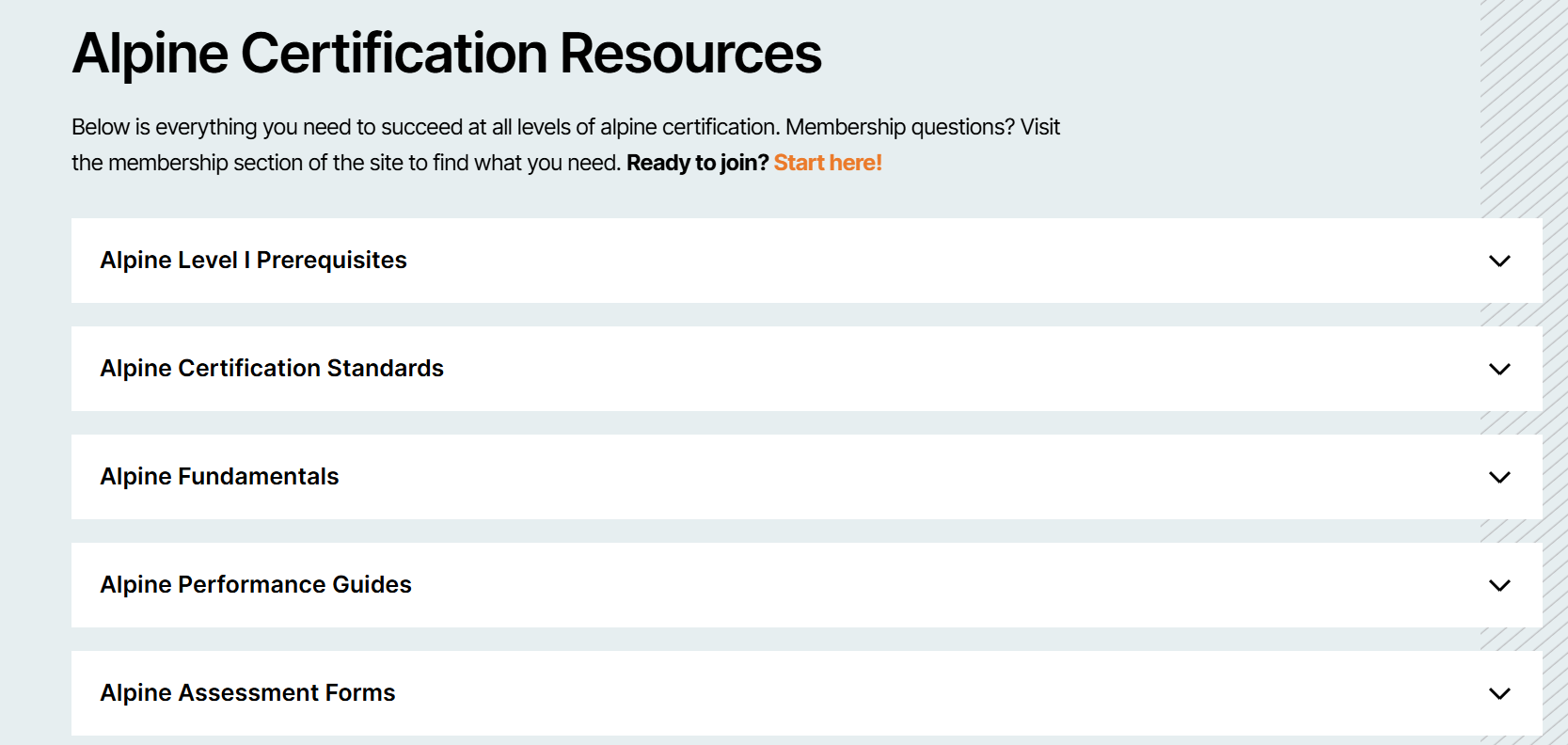PSIA-AASI Director of Education Dave Schuiling has spent plenty of time earning his own discipline-specific certifications – including Level III in alpine, snowboard, and telemark – and also ensuring that each association member’s cert experience is clear, straightforward, and rewarding.
As you prepare for your own assessment this spring, here are some timely tips from Schuiling to help you make the most of your own learning and teaching journey.
Be Yourself
You do you, because nobody else does it better. Some people see the assessment as a different animal, something that they need to train differently for than their everyday teaching. Additionally, trying to be someone or something else will ultimately not facilitate an authentic experience for you, your assessors, and your fellow instructor peers, aka – “learners” – in your group.
Instead of copying others, seek feedback from your peers on how you facilitate learning. Share your triumphs and failures that occurred during your lessons. Your very best training is practicing the job every day. The PSIA-AASI National Standards specify the skills for a great instructor. Practice those skills that make up the Learning ConnectionSM every lesson you teach. Practice the learnable behaviors of the people, teaching, and technical fundamentals but always let your personality shine through. Be true to yourself.
Be Mindful
If you are “on the ball” it generally means you are alert, aware, and perceptive. It also refers to keeping your eye on the ball, meaning focused and driven. This everyday behavior with your students will translate to the assessment. Be in the moment and facilitate learning with the people around you. Adapt to their ever-changing needs and then reflect with them on your and their learning.
Additionally, with your instructor peers, reflect on the day out on the hill. Ask yourself and others some simple questions about the experience: “Did I establish trust?” “Did learning occur?” “Did we have fun?” “Was I inspired?” “Were they inspired?” If the answer is “no” to any of these questions, then ask yourself “why”? From there, what could/would you have done differently? But remember, no two lessons are ever the same. Your greatest asset is to be aware and adaptable.
Be Great
You’ve put in the time, hard work, or “yards,” and you are ready to prove it. You’ve challenged yourself by getting uncomfortable in the learning process. This includes scouring all available resources within PSIA-AASI, such as manuals, e-learning, Matrix videos, and more, along with resources outside the association related to education, biomechanics, technique, and theory. In your thirst for development, you attended training at other resorts/areas, formed cohort study/training groups, and trained on less-than-desirable snow conditions.
Essentially, all the assessment does is validate your skills – those that define great instruction and those that you practice every day with your students. Written into every assessment form is the learning outcome related to professionalism and self-management. This “pro” mantra oozes from every pore of your being so let others see it and experience it. It’s the way you tune your gear, plan your day, teach your lessons, and do your job, which is ultimately sharing what you love to do with others. Do it well, and the assessment is just another day on hill, sharing, learning, and doing what’s fun and makes you happy. It’s time to get after it and slam dunk your assessment.
Finding certification resources: A tip for using our new website
Performance guides, assessment forms, certification standards, fundamentals, and a comprehensive list of manuals are organized by discipline. Pick your discipline from the “Get Certified” menu link at the top of the home page and scroll down to the “Certification Resources” section to find what you need in one spot (click each heading to display the forms and documents).


